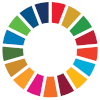Recent Works
search all worksSorted by most recent date added to the index first, which may not be the same as publication date order.
2020 journal article
Poly(ε-Caprolactone) Resorbable Auxetic Designed Knitted Scaffolds for Craniofacial Skeletal Muscle Regeneration
Bioengineering, 7(4), 134.

2019 chapter
Structural Design, Fabrication and Evaluation of Resorbable Fiber-Based Tissue Engineering Scaffolds
In & L. Q. Z. (E. In E. Jacob-Lopes (Ed.), Biotechnology and Bioengineering.
Ed(s): &. In E. Jacob-Lopes